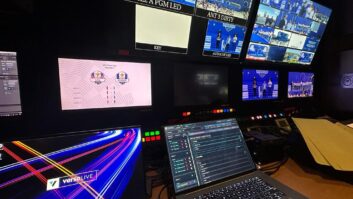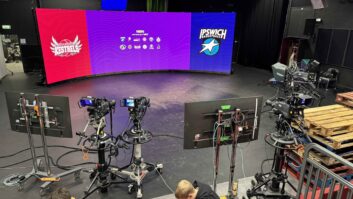Although all parts of the television production world have been hit by the restrictions introduced because of Covid-19, sports broadcasters have been especially affected. With little or no events taking place, they have needed to be resourceful when it comes to filling the schedules.
Of course, archives have come into their own during the past few months, but just how have these valuable assets been used during these unusual times?
Bringing new experiences
Eurosport’s priority has been to continue to serve sports fans and engage them with the most compelling content possible, despite the pause in live events. More than simply showing repeats, Eurosport sought to go beyond the archive alone to bring fans new stories and unique insights.
“We wanted our viewers to benefit from the creativity of our people to ensure we don’t just repeat the archive, but use it to create new experiences and offer fans something they’ve never seen before,” states Gordon Castle, SVP Technology and Operations, Eurosport.

Eurosport’s foundation for these programmes is a 30-year archive. That content transitioned to a digital archive more than 10 years ago, and is regularly used for dedicated productions and highlights shows. During the pause in live sport, the broadcaster has reinvented its use of archive content, while still being able to call on full matches and the original on-air coverage in up to 19 languages and for 75 markets.
“As just one example, during this period, we leveraged Discovery’s unrivalled scale as part of a deeper collaboration between Eurosport and Global Cycling Network (GCN),” says Castle. “That enabled us to bring the Zwift Tour for All series to millions of cycling fans across Europe. In addition, to coincide with when the Giro d’Italia – one of cycling’s three Grand Tours – was due to take place, we worked in partnership with Global Cycling Network to celebrate the most iconic moments from the best stages from days gone by. During the 21 day-series, Eurosport and GCN complemented highlights with unique insights from our current on-screen experts using ground-breaking immersive technology.”
“Giro Classics also gave us the opportunity to use our market leading digital products, including the GCN app, to directly engage with fans by inviting them to join the conversation, as well as giving them the chance to take part in a host of quizzes and polls throughout the series. All creating an enhanced experience built on the archive, but going way beyond a repeat and maximising engagement with our audiences.”
Of course, the Eurosport content goes way beyond cycling. In terms of a local market example, Eurosport UK launched Return to London 2012 – a week-long celebration of one of the greatest events in British sporting history that included interviews – conducted remotely – with some of the athletes featured in the series.
The broadcaster also took the opportunity to launch Players’ Cut – an all-encompassing series delving into the professional life of some of the biggest names in sport, such as Simona Halep and Rafa Nadal.
Vast inventory
Eurosport’s central archive system is managed by a MAM based at Eurosport’s Paris operation. “Our core archive is stored on LTO tape with robotic access, which is directly managed by our dedicated MAM. More than 52,000 hours of content captured before 2008 is securely stored on tapes. We hold more than 213,000 hours of content on data tapes. In all, the total file size of the digital content is approximately 4,700,000 GB.”
Castle continues, “Our editorial team works collaboratively throughout our business to develop compelling concepts that will appeal to, and best serve, our audiences, customers and partners. During the pause in live sport, the flexibility and creatively of our teams have come to the fore. Once the content requirements are decided, our dedicated archive team set to work on supporting and providing the assets as quickly as possible. If the required content is not present in the core archive, we create a dedicated workflow to help ingest the content, through various methods such as FTP sites and Signiant. We archive all the TX copies of the different production control rooms.”
Independently, the team also set up a process to create and archive ‘clean footage’ and the whole event in question. This is because a transmission copy may not start at the very beginning of an event – such as a player or athlete warm-up – and end slightly before what the team may require – for example, before the full celebrations or podium or trophy presentation – which may form part of the editorial requirement.
Once finalised, the media assets are compiled, documented, grouped, named, indexed, scripted and catalogued in order to be the most relevant to search for the needs of the different users.
Castle goes on, “Currently we work on Diva Archive, Grass Valley SAN K2 within our production facilities in Paris and London. In local markets, our teams have various storage solutions such as XDCAM.”
“At the current time, we use resiliency in the LTO tape robotics and also leverage archives from our content partners. As part of our technology transformation, we will have a full Cloud-based backup across our content.”
A Eurosport metadata schema based on a detailed taxonomy is used to help to retrieve content. Event date, sport, competition, event, category, player(s), broadcasting date are some of the metadata tags used.
“Looking to the future, our enhanced MAM – Stratus from Grass Valley – will include even more details to add additional complex workflows and help make the retrieval of content easier for anyone, wherever they are based and whatever platform the end content will be shown.”
Read the rest of Philip’s article in the July/August 2020 issue of TVBEurope






